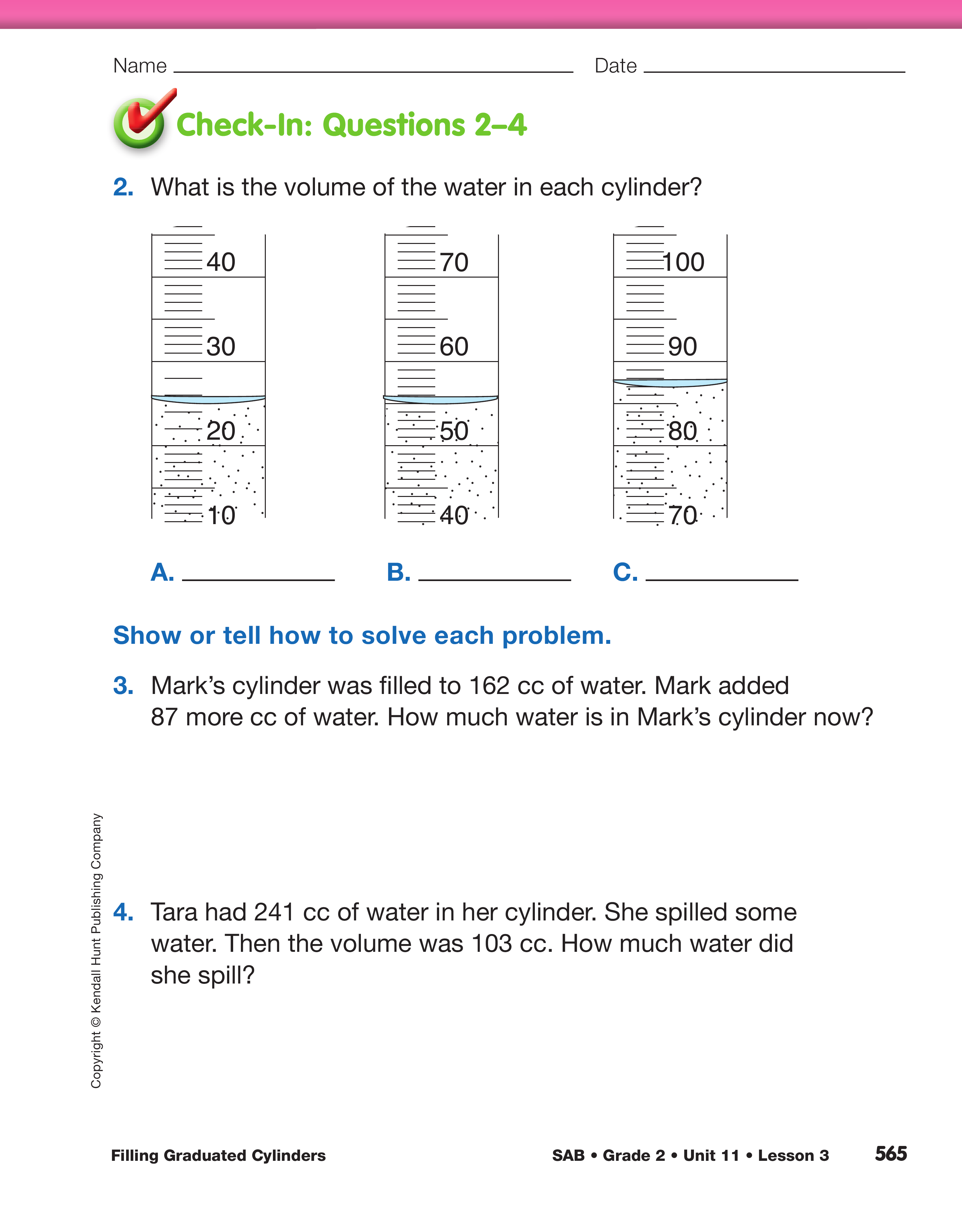When students have finished the activity have them
describe to each other the correct procedure for filling
a graduated cylinder. Then have them independently
complete Questions 1 in the Draw section on
the Filling Graduated Cylinders pages in the Student
Activity Book, which asks them to draw and label the
steps in correctly filling a graduated cylinder. When
ready, have a few volunteers share their drawings.
Tell students you will pose questions in which
two students, Tara and Mark, did the same activity
they did in the lesson using 250-cc cylinders.
- Tara has a 250-cc graduated cylinder. You have a
100-cc cylinder. If you fill your cylinder with water
and pour the water into the 250-cc cylinder, will it
fill it? (Possible response: No, it would not fill it.)
- About how many of your 100-cc cylinders will it
take to fill a 250-cc cylinder? (About 2 or 2 and
one-half 100 cc cylinders)
- Tara has 115 cc in her 250-cc cylinder. Mark has
217 cc in his cylinder. What's the difference? (102 cc; Possible number sentence:
217 − 115 = 102)
- Tara has 104 cc in her 250-cc cylinder and adds
111 cc. What is the total volume? (215 cc; Possible
number sentence: 104 + 111 = 215)
- Tara starts with 188 cc in her 250-cc cylinder. She
adds some water and now has 245 cc. How much
water is added? (57 cc; Possible number sentence:
188 + 2 + 10 + 45 = 245 and
2 + 10 + 45 = 57)
- Mark starts with a volume of 232 cc and poured
some water out. The volume is now 91 cc. How
much water did Mark poured out of the cylinder? (141 cc; Possible number response:
232 − 32 − 100 − 9 = 91 and
32 + 100 + 9 = 141)
To end the lesson, have students complete Check-In:
Questions 2–4 on the Filling Graduated Cylinders
pages in the Student Activity Book independently.
Use the Filling Graduated Cylinders pages in the Student
Activity Book to assess students' abilities to read and
interpret a variety of graduated cylinders of varying
calibrations [E4]; solve addition and subtraction word
problems involving volume [E3]; and use labels [MPE6].

















